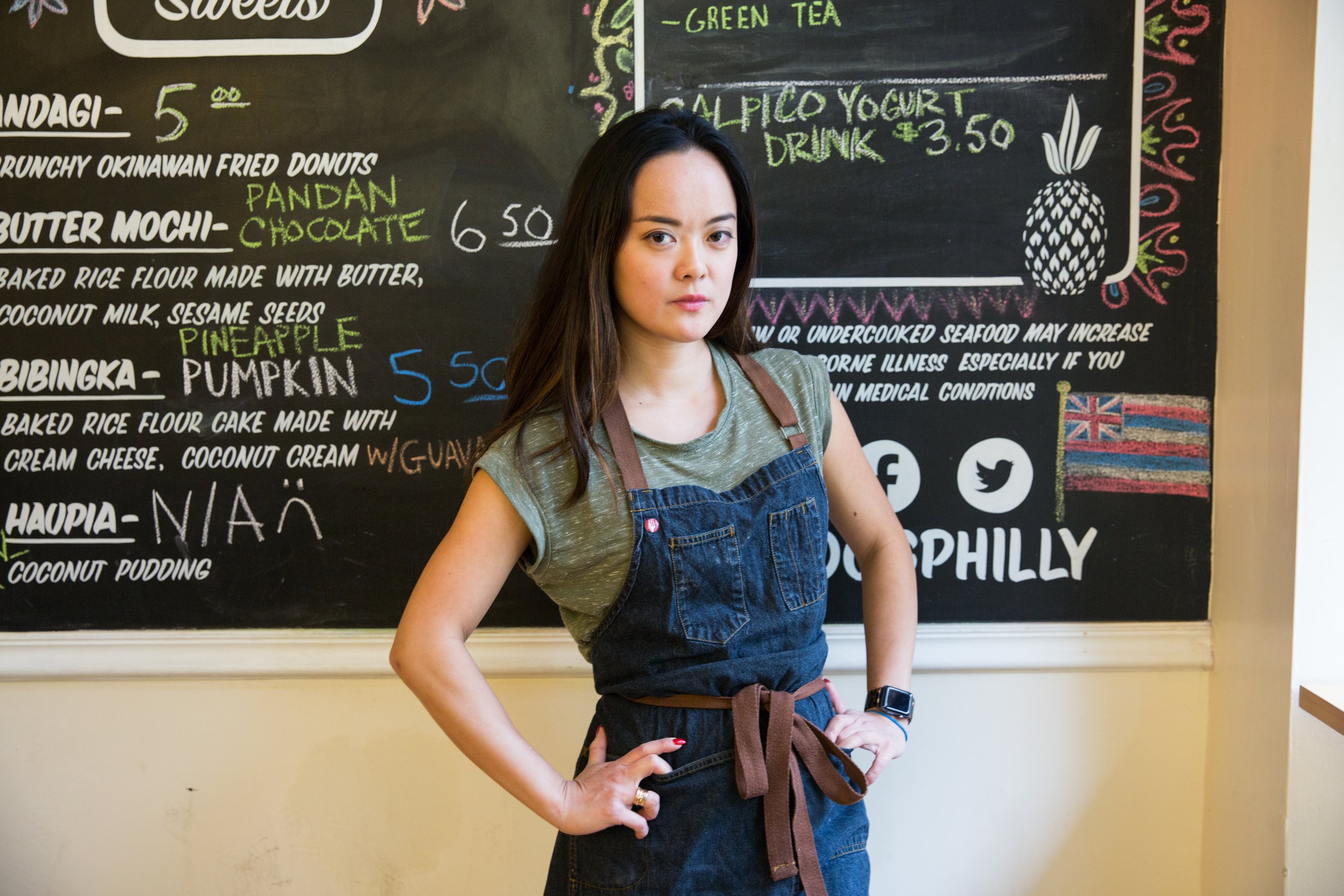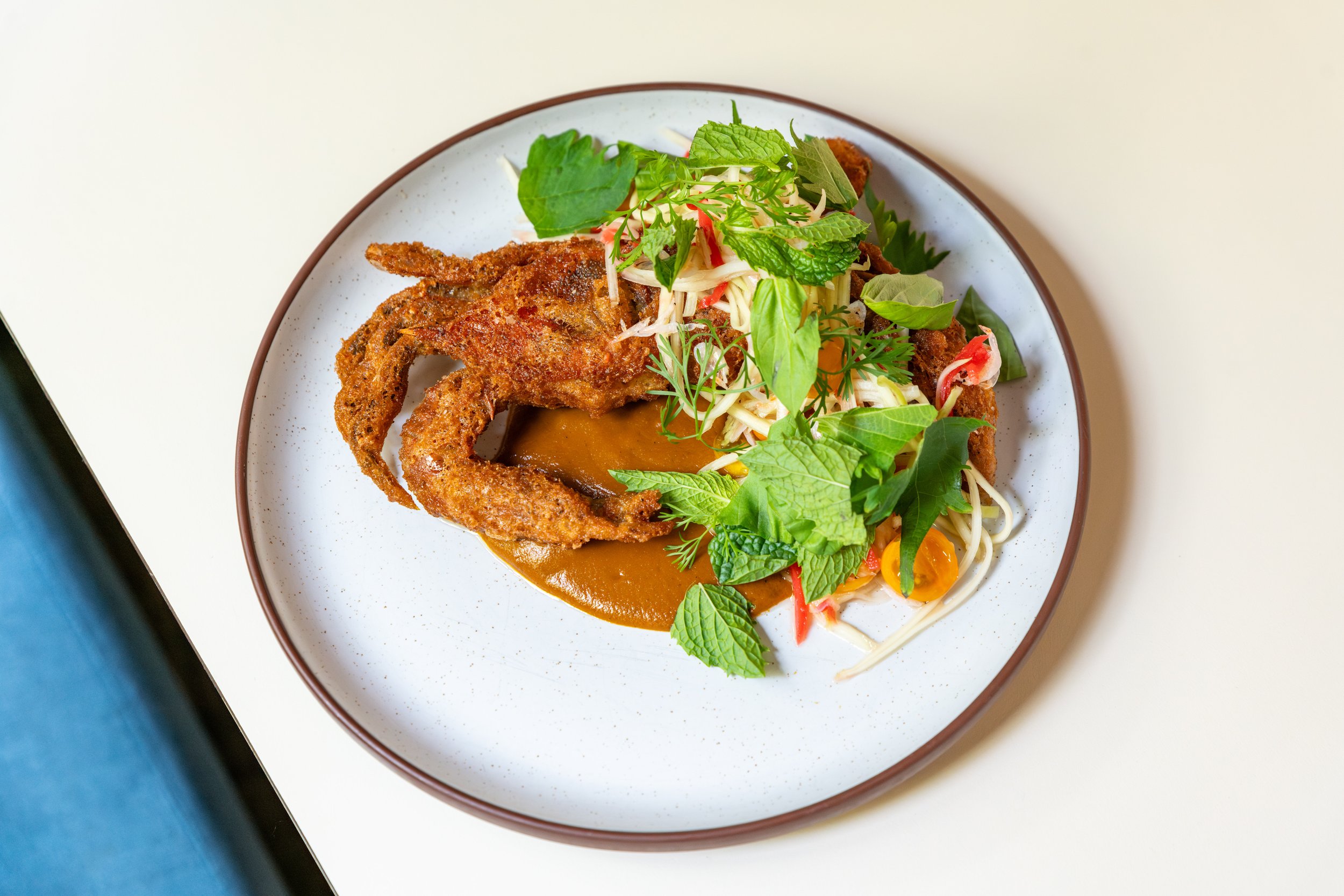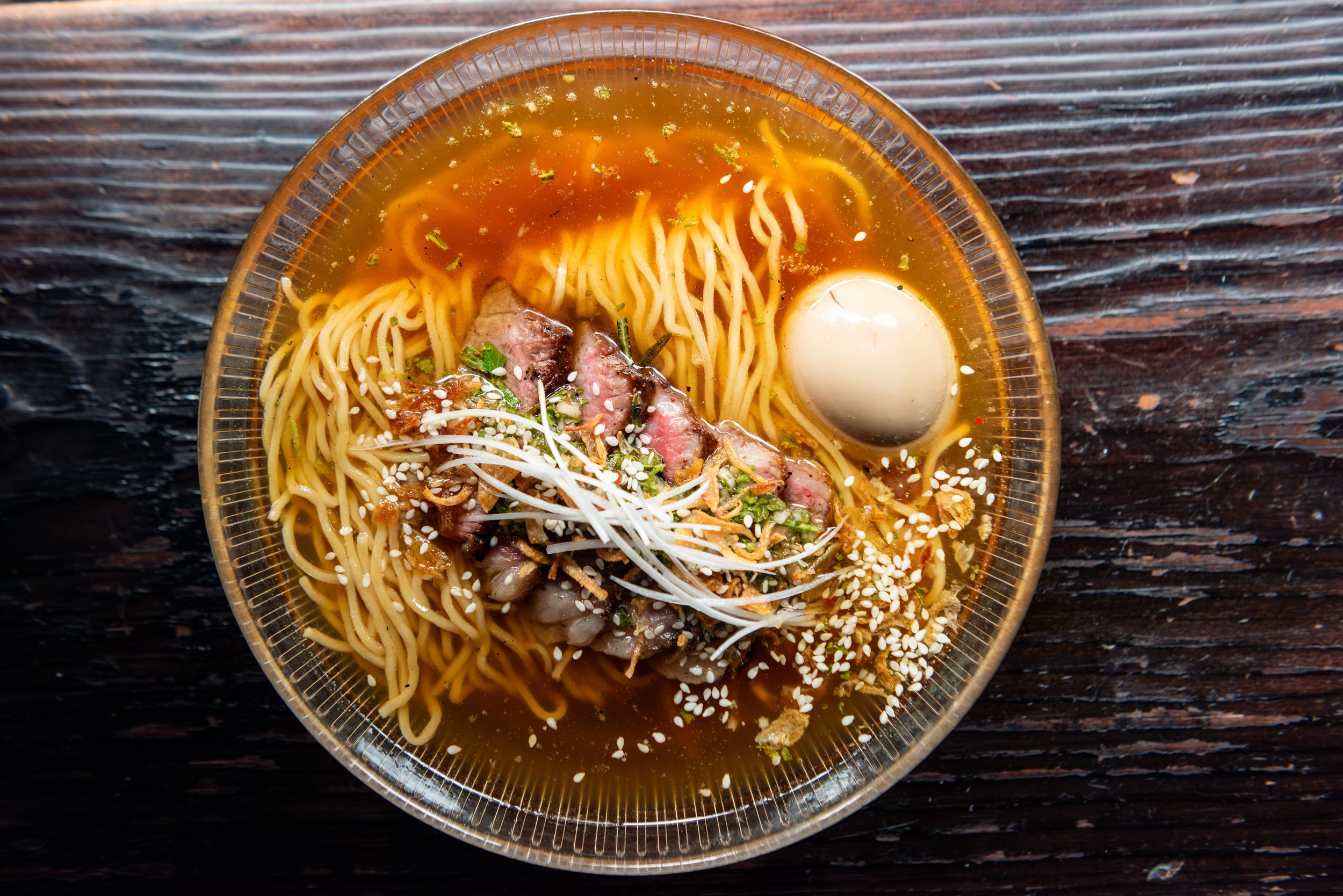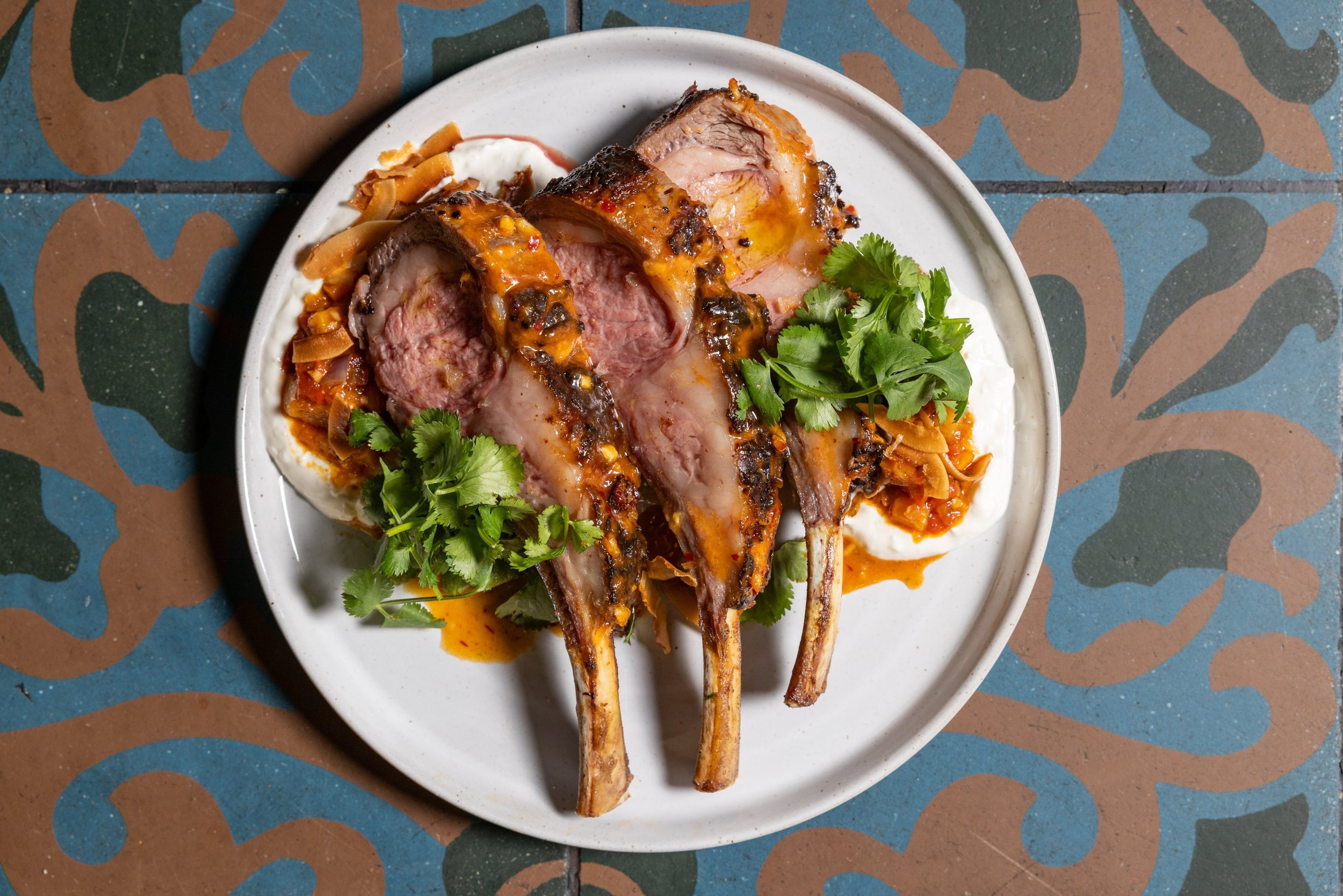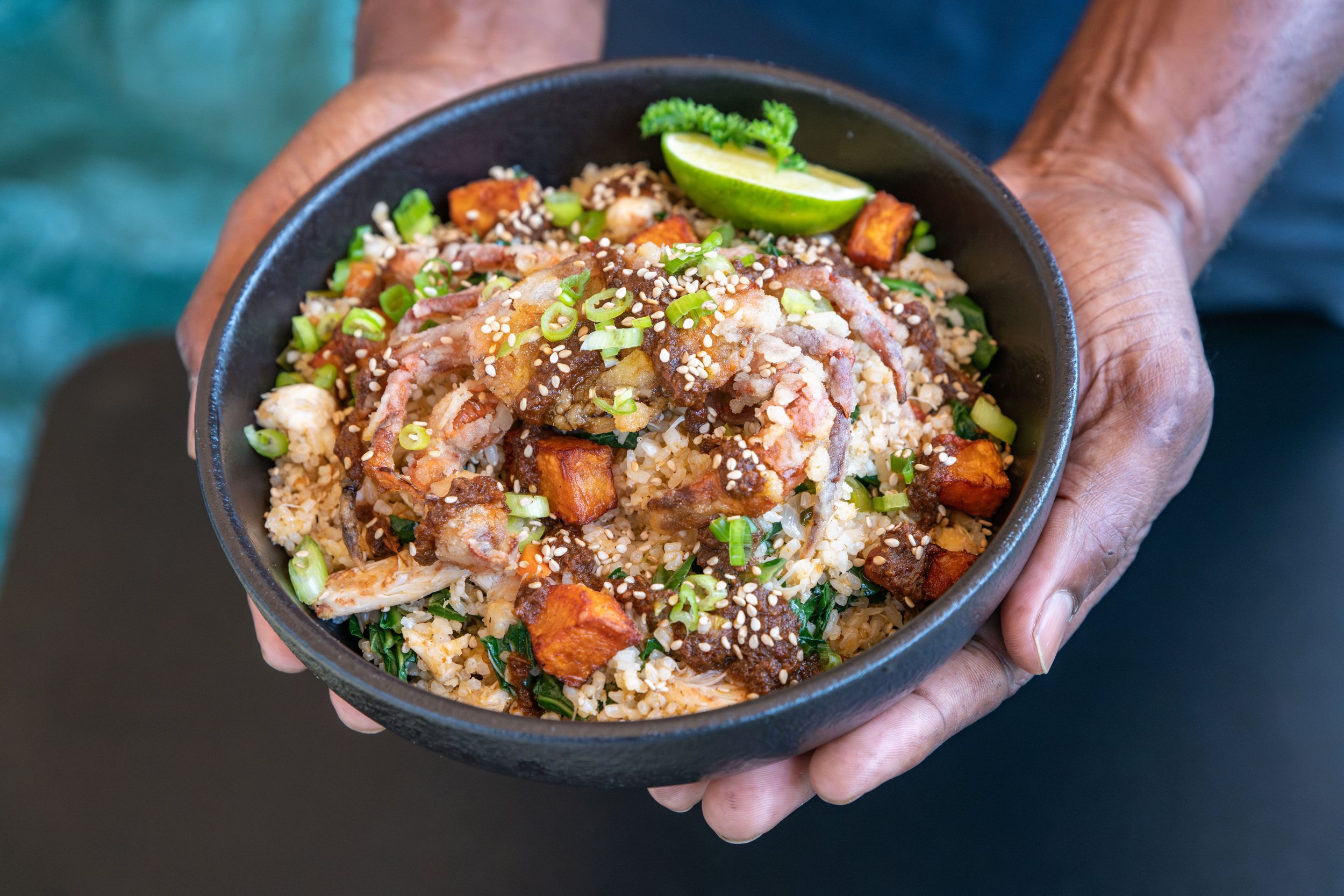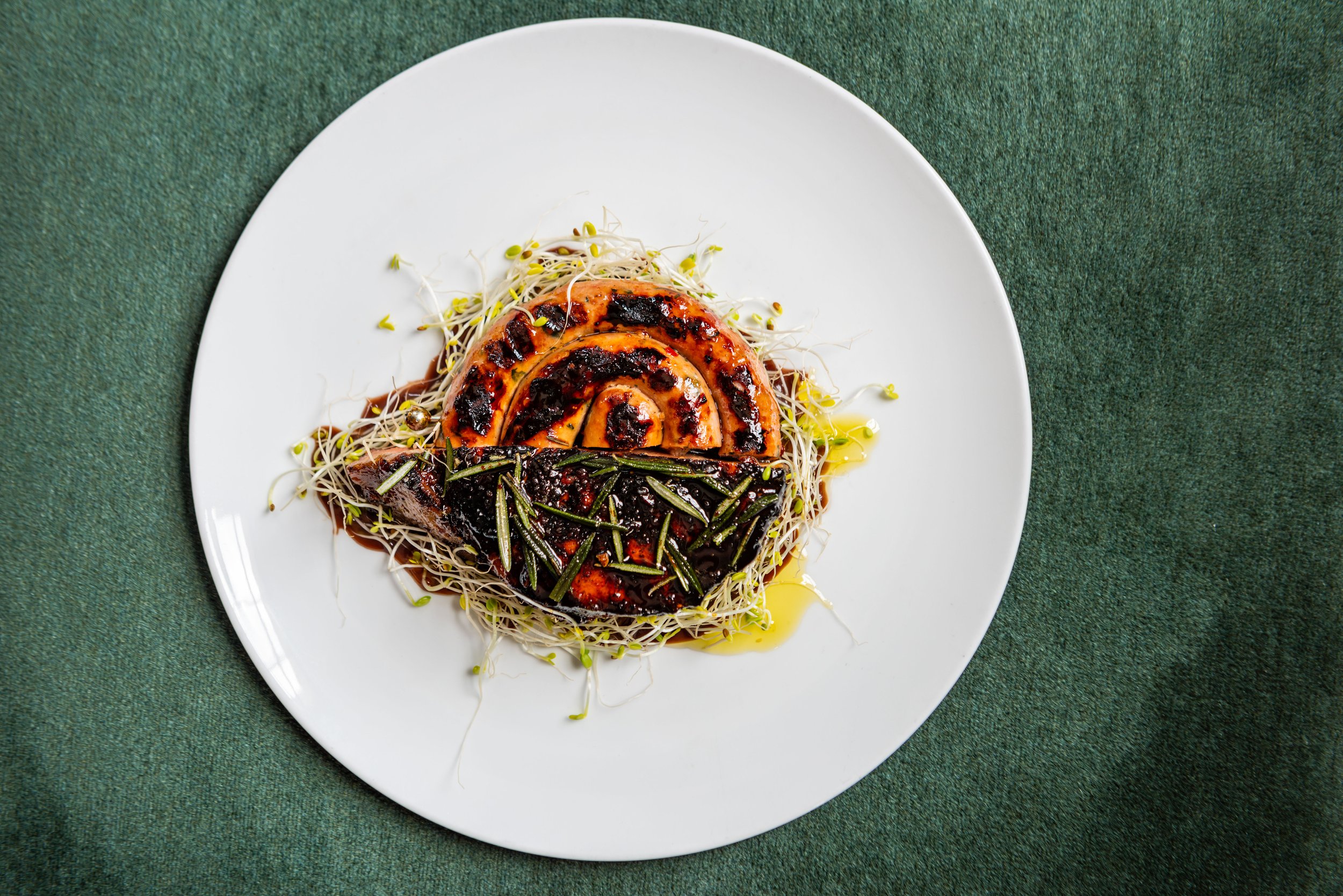Local Hawaii
Kiki Aranita is introducing Philadelphia to the nuances of Hawaiian food.
Chef Kiki Aranita of Poi Dog
“We’re changing people’s perception of Hawaiian food,” says Kiki Aranita, Oahu native and Co-owner of Philly’s Poi Dog with business partner Chef Chris Vacca, a native Philadelphian. “It’s personal. Poi Dog is an extension of home. Sometimes when you take a cuisine, you take a memory and make a static facsimile of it. Here, we’re constantly evolving and incorporating influences and collaborating with other chefs.”
Aranita’s openness to outside influences and collaboration is very Hawaii. Hawaii cuisine and culture is an amalgam of native-Hawaiian, Filipino, Japanese, Chinese, Polynesian, Portuguese, and other global and mainland American influences. Many of these groups arrived in waves to work on sugar plantations on the Islands. “Poi dog means mutt, not straight-up Hawaiian. We use all the cuisines brought in by plantation workers throughout our history,” says Aranita.
The heart and soul (and moneymakers) of Poi Dog’s menu are Hawaiian-style plate lunches. An evolution of bento boxes brought by Japaneses laborers who arrived around the turn of the 20th century, plate lunches will resonate with anyone who has been to a meat-and-three joint in the American South or eaten off a paper plate propped up on their knees at a church luncheon. “Plate lunches are made up of the trinity: one scoop of rice, one scoop of macaroni salad, and a meat entrée,” Aranita says.
Combo Plate Lunch: Adobo Pork Belly, Fried Chicken, Atchara, Pickled Red Cabbage, Rice, and Togarashi-Yuzu Mayo
Half and Half Poke Bowl: Spicy Ahi Poke, Shoyu Ahi Poke, Sesame, Sriracha Mayo, Red Clay Salt, and Green Onion
Poi Dog offers three plate lunches: kalua-style pulled pork and green cabbage; mochi-nori fried chicken with togarashi-yuzu mayo and pickled red cabbage; and Filipino-style pork belly adobo with atchara. The belly is brined overnight with star anise, coriander, cumin, and fennel, and braised in Kikkoman soy sauce, rice vinegar, stock, garlic, black pepper, and bay leaf. “We then slice the belly and finish it on the flattop to achieve a crispy seared edge. It’s more of a ‘dry adobo’ with all the familiar flavors but not served as a stew,” says Vacca. “I like using Kikkoman because it’s versatile. Its salinity is not overbearing, and it has a noticeable depth of flavor, which not only makes it ideal for marinating and cooking, but also works quite well as a finishing seasoning or sauce,” Vacca says. The soy provides an umami throughline on the Poi Dog menu. Vacca uses it to marinate the fried chicken, season mega-fresh poke, and in anything that calls for shoyu.
“We call it ‘local food.’ I know on the mainland this doesn’t nearly have the same weight as the phrase does in Hawaii. It not only describes where the food is produced and enjoyed, but also describes food that was brought from outside Hawaii and became accepted as Hawaii’s own. It simultaneously means ‘local from here’ and ‘local but specifically not from here.’
interior of poi dog

